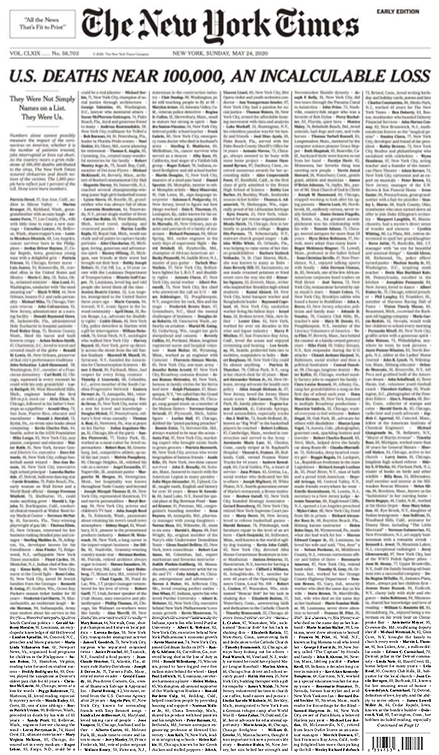 Memories of The New York Sunday Times. There is something rewarding about the world wide web (www), it is instantaneous and research resourcing can be done in the snap-of-a-finger from the comfort of any prosthetic digital device. Fondly called in the early 1990s, the World-Wide Wait (as the new superhighway of cyberspace), I remember when searching was nicknamed “surfing,” to be rapidly replaced by to Google or googling as in “to use Google, the internet search engine, to find information on a person or thing . . .”
Memories of The New York Sunday Times. There is something rewarding about the world wide web (www), it is instantaneous and research resourcing can be done in the snap-of-a-finger from the comfort of any prosthetic digital device. Fondly called in the early 1990s, the World-Wide Wait (as the new superhighway of cyberspace), I remember when searching was nicknamed “surfing,” to be rapidly replaced by to Google or googling as in “to use Google, the internet search engine, to find information on a person or thing . . .”
As much as Google has become a popularized encyclopedia of the 21st century, I favor Yahoo as my trusted web portal. Let me be honest, I’m not a fool, and know that whatever information I look for is recorded as a cookie, each click similar to the stones and breadcrumbs in the fairy tale Hansel and Gretel. But contrary to Google whose homepage features a changing logo and a simple search box, Yahoo’s homepage is editorialized and offering endless information for viewers to enjoy.
 Detail Yahoo homepage: accessed May 28, 2020
Detail Yahoo homepage: accessed May 28, 2020
Images, bold titles, archives, trending news, weather and financial reports, with customized suggestions for every interest, pack the small real estate of any digital device. Scroll down the screen and you will discover hyperlinks and hotlinks at every corner. Titles, images, highlighted sentences and words become portals to a labyrinth of information that eventually makes you wonder what you were really researching. Hover with your mouse or fingers and a larger and often unexpected world unfolds.
There is a designed order to this madness and opulence of information; but let’s be fair, information has never meant knowledge and the latter, more than ever, is being devalued. Information today is more about accessing rather than digesting.
 Detail The New York Times homepage: accessed May 27, 2020
Detail The New York Times homepage: accessed May 27, 2020
Since going digital, I read my favorite newspaper online. I have even made the New York Times my homepage. It is comforting to have the latest news so instantaneously, but the digital edition will never be a substitute for the paper version. Yet it acts as a Vade Mecum of information, a reference, wherever I am. This is particularly important since, where I currently live, I cannot secure home delivery of the daily paper and the Sunday New York Times is only found sporadically at the grocery store.
When mentoring students in architecture, I emphasize many concepts, but one that remains fundamental is that architecture needs to be experienced to be successful. This is also true when I think of the digital world and the internet in particular. Several internet portals have designed their content almost to perfection—engaging the human senses of sight, sound, smell and touch, leaving taste for those aficionados who love to moisten their index finger to ease turning the pages of the paper, i.e., an activity that reminds me of Umberto Eco’s mystery The Name of the Rose. However, when reading the Sunday New York Times, I am reminded fondly of the experience of seeing the paper be assembled.
The New York Sunday Times
In the mid-80s I lived in Manhattan at the edge of the East Village in front of alphabet city—colloquially named for its four infamous avenues: A was alright, B was bad, C was crazy, and D was deadly. Renting an apartment in Stuyvesant Town was like staring at the edge of civilization, particularly at dusk when I could see horse mounted policeman trot on 14th Street ready for their nightly patrol. My living conditions were irresponsibly exhilarating (although certainly tamer than Scorsese’s movie Taxi Driver), but certainly did not set at ease my parents in Switzerland, a country which I by then considered monotonous given my New York life.
During that time, I remember my roommate Michael and I anxiously waiting to purchase the Sunday issue of the newspaper. Living in New York we could buy our paper Saturday night after watching the owner of a newspaper kiosk assemble each section, carefully and chronologically, with hundreds of ads and grocery coupons that were part of the weekend tradition for any die-hard New Yorker. We were for a short moment one of them!
Quickly, I learned to be ambidextrous. The excitement of walking down the street, firmly holding the New York Times in one arm while flipping through the sections with my other hand. (According to Guinness World Records “The New York Sunday Times printed in September 1987 was the heaviest ever newspaper, at over 12 pounds (5.4 kg) and 1,612 pages.”) My handling of the newspaper became second nature.
I would promptly discard the sports section in a nearby over flowing garbage bin, which I still do in the confines of my home. Sorry, sport fans, I have never been a sport’s guy, or inclined to understand American sports, even after moving to Kentucky and discovering the unconditional passion Lexingtonian’s have for the Wildcats. Back then, glancing at the headlines, I would eagerly look for the Weekend and Home and Art sections, the latter in order to know which galleries to visit after enjoying brunch at a local Seinfeld-style coffee shop. I was in heaven.
 Google: The New York Sunday Time front page, May 24, 2020
Google: The New York Sunday Time front page, May 24, 2020
Conclusion
And yet, this past Sunday, I was brought back to those memorable moments in the city, although with great sadness. Holding the newspaper with both hands, I was mesmerized by the power of the front page of the New York Times. Its strength and silence in honoring those who were no longer with us was overpowering. Committed to reading many of the short sentences that depicted like a city the uniqueness of each life lost, where each name represented a citizen, a family member, a loved one and a friend across the nation, the power of the page was tremendous.
In today’s world where the content of news is challenged, the New York Times’s slogan “All the News That’s Fit to Print,” is, for me through this past Sunday’s front page, alive and well.